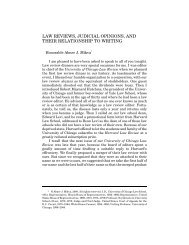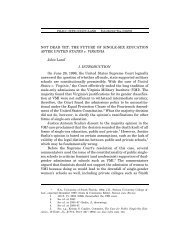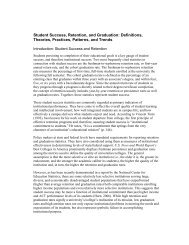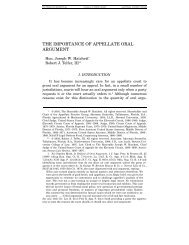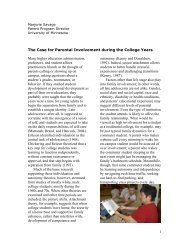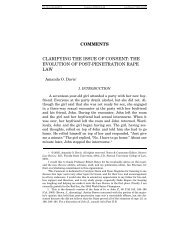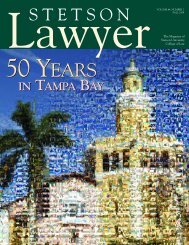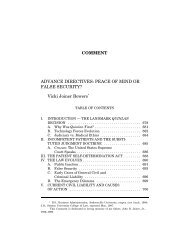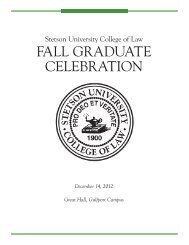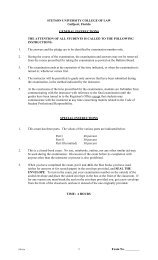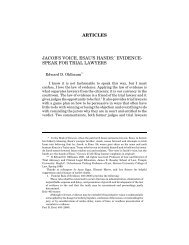TOWN OF CASTLE ROCK v. GONZALES: THE ... - Stetson University
TOWN OF CASTLE ROCK v. GONZALES: THE ... - Stetson University
TOWN OF CASTLE ROCK v. GONZALES: THE ... - Stetson University
You also want an ePaper? Increase the reach of your titles
YUMPU automatically turns print PDFs into web optimized ePapers that Google loves.
File: Hasanbasic.362.GALLEY(d).doc Created on: 9/25/2007 2:29:00 PM Last Printed: 9/26/2007 10:35:00 AM2007] Town of Castle Rock v. Gonzales 883incident report, but instead of taking action, the officer on duty“went to dinner.” 15 Later that night, the husband drove to the policeheadquarters and opened fire on police officers, who shot backand killed him. 16 Inside his truck police found the bodies of thethree minor daughters whom he had killed earlier that night. 17Ms. Gonzales then filed a civil lawsuit, alleging that the town haddeprived her of due process because its police department had “anofficial policy or custom of failing to respond properly to complaintsof restraining order violations.” 18In this tragic case—Town of Castle Rock v. Gonzales 19 —theUnited States Supreme Court was asked to decide whether a personhas a constitutional property entitlement to police enforcementof a judicially granted restraining order. The issue beforethe Court was framed under the procedural aspect of due process,rather than substantive due process, because of a 1989 rulingfrom the Supreme Court barring the use of substantive due processto enforce government protective action. 20 Because the claimwas grounded in procedural due process, the respondent could notargue that the state was categorically obligated to protect her andher children from her husband intruding upon their personal securitybecause this would be a substantive due process “liberty”claim. 21 Instead, Ms. Gonzales argued that she had a “propertyinterest” in the enforcement of the restraining order, and that the15. Id. at 753–754.16. Id. at 754.17. Id.18. Id.19. 545 U.S. 748 (2005).20. DeShaney v. Winnebago County Dept. of Soc. Servs., 489 U.S. 189, 201 (1989). Fora brief overview of the legal precedent set forth in DeShaney, see infra Part II(A) and accompanyingfootnotes.21. As noted by the Tenth Circuit, Ms. Gonzales’ original complaint encompassed bothsubstantive and procedural due process, but the substantive aspect was summarily dismisseddue to DeShaney. Gonzales v. City of Castle Rock, 366 F.3d 1093, 1099 (10th Cir.2004). For a discussion of procedural versus substantive due process, see DeShaney, 489U.S. at 194–195 (articulating why the petitioner’s claim in that case was substantive andnot procedural). But see Youngberg v. Romeo, 457 U.S. 307, 315 (1982) (stating that “theright to personal security constitutes a ‘historic liberty interest’ protected substantively bythe Due Process Clause”). In Youngberg, the Court held that a mental patient who sufferedserious injuries while institutionalized could state a claim under substantive due processbecause he had substantive rights to “adequate food, clothing, shelter and medical care”while he was involuntarily committed. Id. at 324.



